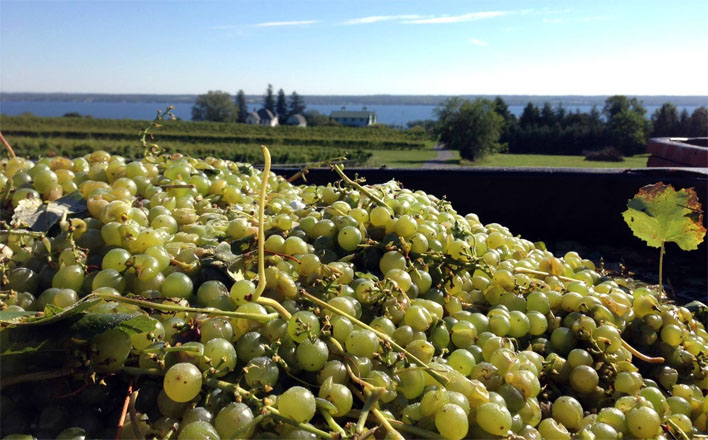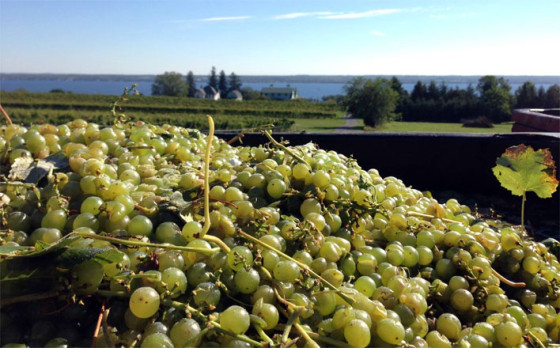Earlier this year, NYCR set out to gather data on the Finger Lakes wine industry to get a better understanding of several aspects of the industry. The method was simple: we gathered data from industry, winery and reseller websites regarding the wines from Finger Lakes producers that were being offered online. Admittedly, it was not a scientific data collection, and the information was only as accurate and complete as the sites provided. But we did gather data on more than one hundred wineries and nearly two thousand wines, which provided a significantly large sample size for our review. And because we were able to obtain the data directly, the sample had the added benefit of objectivity.
Over the next few months, the data we gathered and our conclusions about it will be published in a feature titled “Finger Lakes Wine By the Numbers.” In this post, we will take a look at a few aspects of the Finger Lakes wine industry as suggested by the data.
Riesling Rules the Region
The rise of popularity of riesling wines produced in the Finger Lakes over the past two decades has been remarkable. Today, the Finger Lakes is widely recognized as the premier riesling-producing region in America. The coverage of riesling’s rise has gone far beyond the pioneering work done by my colleagues on this site. New York Times wine writer Eric Asimov wrote, “More than any other American wine region, the Finger Lakes has devoted itself to riesling… Producers in the Finger Lakes largely agree that riesling is the white grape best suited to its conditions. Instead of an afterthought, it is the focus.”
Our survey data supports that assertion. Of the nearly two thousand wines in our sample, approximately 12% were riesling, making it the most frequently produced wine in the sample. Of varietal wines, riesling represented nearly 24% of the wines in the sample, which again ranked first. Finally, of the more than one hundred wineries in the sample, approximately 88% produced at least one riesling wine; the average number of rieslings that each winery produces is between two and three.
No matter how the data is viewed, riesling is the clear-cut favorite wine of the Finger Lakes.
But There is Also Diversity
As good as Finger Lakes riesling wines might be, it might not be the preferred wine for all. Fortunately for those individuals, the region has much more to offer.
Today, Finger Lakes wineries produce a wide diversity of wines ranging from varietals to unique blends, from sparkling to port-style, and from fruit to ice wines.
The most popular category of wines in our sample were single-variety still wines. More than half of the wines in our survey were are made from Vitis Vinifera (European origin), Vitis Lambrusca (native) or hybrid (developed by crossing species). Of these wines, nearly five dozen different grapes were represented. While riesling, chardonnay and cabernet franc hold the top spots on the popularity list, there are also plenty of lesser known grapes like leon millot, teroldego, rkatsiteli, and more.
Plenty of Value
If value is what you are looking for in a wine, there may be no better place to find it in America than in the Finger Lakes. While the interpretation of prices can be fraught with countless caveats, the price of Finger Lakes wines speak for themselves.
The average price of all wines included in our sample was $16.15. Although this average varied somewhat lake-to-lake, with an average of $14.08 on Conesus Lake to $19.42 on Canandaigua Lake, the overall average was significantly lower than published averages for other wine-producing regions in the United States. According to a 2013 study of direct-to-customer sales that was conducted by the wine industry publication Wines & Vines, the U.S. national average price for a bottle of wine was $37.62 in 2012. The region that was closest to the Finger Lakes in terms of average price was California — excluding Napa and Sonoma — at $27.48.
| Average Price by Lake | |
| Canandaigua | $19.42 |
| Seneca | $16.74 |
| Skaneateles | $16.35 |
| Cayuga | $15.43 |
| Keuka | $15.28 |
| Conesus | $14.08 |
| Overall | $16.15 |
As mentioned, care must be taken when comparing data from regions as disparate as Napa and the Finger Lakes. Upstate New York does not produce the abundance of full-bodied red wines that dominate the California wine industry. The higher prices of California cabernet sauvignon and related red blends have a significant impact on regional average prices. But that fact notwithstanding, the Finger Lakes remains one of the most affordable regions in the United States for high-quality wines.


